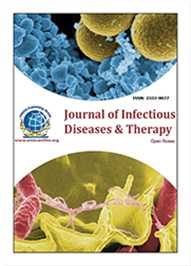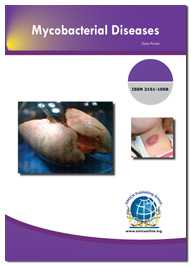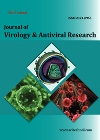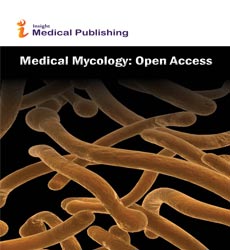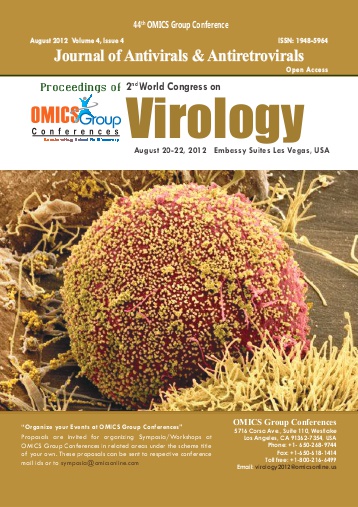Theme: Fungal Biodiversity, Physiology and Ecology in a Changing Environment
Mycology 2016
ConferenceSeries Ltd invites all the participants from all over the world to attend ‘International Conference on Mycology & Mushrooms’ during September 12-14 in San Antonio, USA, which includes prompt keynote presentations, Oral talks, Poster presentations and Exhibitions.
In the line with International Conference on Mycology, addressing the most recent advances across the spectrum of Mycology research from basic sciences to public health, conference highlights will include Microbial Diversity, Systematics, Phylogeny and Evolution, Fungal identification and quantification, Fungi and Ecosystem Functioning, Ecology and mycology, Mycotoxicology, Mycobacterium, Mushrooms, Clinical Mycology, Fungal Biotechnology, Industrial Mycology, Medical mycology, Veterinary Mycology, Food mycology.
ConferenceSeries Ltd Organizes 300+ Conferences Every Year across USA, Europe & Asia with support from 1000 more scientific societies and Publishes 500+ Open access journals which contains over 50,000 eminent personalities, reputed scientists as editorial board members.
Featuring 3 days of Scientific workshop, Special sessions, Speaker & Poster session, Industrial Expo. 300+ attendees from all over the world.
Track 1- Mycology Diversity
The Mycology & Metabolic Diversity Research Centre has constructed huge microbial libraries and the microbial assays consisting of more than 20,000 microbial isolates and 30,000 cultured extracts. The diversity, uniqueness and ubiquitous nature fungi elevated their status to the level of fifth kingdom and represent one of the three major evolutionary segments along with plants and animals. Plan fungi and diseases are highly depends on fungal diversity. Fungi are placed next to arthropods and angiosperms in their richness. They are known to interact with plants. Animals in clinical trials and microbes lead symbiotic. Mutualistic and saprophytic or pathogenic life.
Related conferences
International Conference on Water Microbiology & Novel Technologies- July 18-20, 2016 Chicago, USA; 3rd Microbiologists Annual Meeting -August 15-17, 2016 Portland, USA; 2nd world Congress on Beneficial Microbe -September 23-25, 2016 Phoenix, USA; Microbial Physiology Conference- September 29-30, 2016; London, UK; Infectious Diseases Conference- Oct 3-5, 2016 Vancouver, Canada; International Conference on Medical Parasitology 2016 , October 17-19, 2016, Houston, USA; International Conference on Human Papillomavirus – October 20-21, 2016, Chicago, USA; Clinical Microbiology Conference- October 24-26, 2016 Rome, Italy; North American Mycological Association, International Mycological Association, North American Mycological Association, Minnesota Mycological Society, Yakima Valley Mushroom Society, Wisconsin Mycological Society, New York Mycological Society
Track 2- Systematics
Fungi were initially classified with plants and were a subject of interest for botanists; hence the influence of botany can be seen on their classification and also a large number of plants used for medicine. In 1969 R.H Whittaker classified all living organisms into five kingdoms namely Monera, Protista, Fungi, Plantae and Animalia. Traditionally the classification proceeds in this fashion: Kingdom - Subkingdom - Phyla/phylum - Subphyla - Class - Order - Family - Genus- Species This classification is too complicated to be dealt here. There are alternate and more practical approaches, one based on sexual reproduction and the other based on morphology of the talus (vegetative structure).
Related conferences
World Congress on Microbiology, November 28-29, 2016 Valencia, Spain; International Conference on Water Microbiology & Novel Technologies- July 18-20, 2016 Chicago, USA; 3rd Microbiologists Annual Meeting -August 15-17, 2016 Portland, USA; 2nd world Congress on Beneficial Microbe -September 23-25, 2016 Phoenix, USA; Microbial Physiology Conference- September 29-30, 2016; London, UK; Infectious Diseases Conference- Oct 3-5, 2016 Vancouver, Canada; International Conference on Medical Parasitology 2016 , October 17-19, 2016, Houston, USA; International Conference on Human Papillomavirus – October 20-21, 2016, Chicago, USA; Clinical Microbiology Conference- October 24-26, 2016 Rome, Italy; 7th World Congress on Applied Microbiology, November 10-12, 2016 Istanbul, Turkey, Vancouver Mycological Society, Edmonton Mycological Society, Mycological Society of Toronto, Mycological Association of Washington, Mycological Society of San Francisco, Sonoma County Mycological Association, The Southern Idaho Mycological Association, North American Mycological Societies,
Track 3- Phylogeny and Evolution
The global conservative fungal estimate. 1.5 million is mainly based on angiosperm/fungus ratio (1:0.5-1:33). But only a fraction of this is currently known (about 100.000) and a few have been harnessed. The discipline Mycology has multidimensional facets with basic and applied values and the recent investigations i.e. applied mycology have gone beyond routine systematics, diversity and environmental issues. Fungi serve as novel source of food. fuel, bio pesticides, metabolites and pharmaceuticals. Being eukaryotes, fungi became important basic tool in biotechnology and bioremediation.
Related conferences
International Congress on Bacteriology and Infectious Diseases, May 16-18, 2016, San Antonio, Texas, USA; World Congress on Microbiology, November 28-29, 2016 Valencia, Spain; International Conference on Water Microbiology & Novel Technologies- July 18-20, 2016 Chicago, USA; 3rd Microbiologists Annual Meeting -August 15-17, 2016 Portland, USA; 2nd world Congress on Beneficial Microbe -September 23-25, 2016 Phoenix, USA ; Microbial Physiology conference- September 29-30, 2016; London, UK; Infectious Diseases Conference- Oct 3-5, 2016 Vancouver, Canada; International Conference on Medical Parasitology 2016 , October 17-19, 2016, Houston, USA; Clinical Microbiology Conference- October 24-26, 2016 Rome, Italy; Mycological Society of America, Illinois Mycological Association, Canadian Mycological Associations, South Vancouver Island Mycological Society, Vancouver Mycological Society, Edmonton Mycological Society, Mycological Society of Toronto, Mycological Association of Washington, Mycological Society of San Francisco, Sonoma County Mycological Association, The Southern Idaho Mycological Association,
Track 4- Fungal identification and quantification
Fungal infections pose unique challenges to molecular diagnostics; fungal molecular diagnostics consequently lags behind bacterial infection and viral infection counterparts. Nevertheless, fungal infections are often life-threatening and early detection and identification of species is crucial to successful intervention. A high throughput PCR-based method is needed that is independent of culture, is sensitive to the level of one fungal cell per millilitre of blood or other tissue types, and is capable of detecting species and resistance mutations.
Related conferences
International Conference on Water Microbiology & Novel Technologies- July 18-20, 2016 Chicago, USA; 3rd Microbiologists Annual Meeting -August 15-17, 2016 Portland, USA; 2nd world Congress on Beneficial Microbe -September 23-25, 2016 Phoenix, USA; Microbial Physiology conference- September 29-30, 2016; London, UK; Infectious Diseases Conference- Oct 3-5, 2016 Vancouver, Canada; International Conference on Medical Parasitology 2016 , October 17-19, 2016, Houston, USA; International Conference on Human Papillomavirus – October 20-21, 2016, Chicago, USA; Clinical Microbiology Conference- October 24-26, 2016 Rome, Italy; 7th World Congress on Applied Microbiology, November 10-12, 2016 Istanbul, Turkey, Mycological Association of Washington, Mycological Society of San Francisco, Sonoma County Mycological Association, The Southern Idaho Mycological Association, North American Mycological Societies, Minnesota Mycological Society, Yakima Valley Mushroom Society, Wisconsin Mycological Society, New York Mycological Society
Track 5- Fungi and Ecosystem Functioning
Unlike green plants fungi lack chlorophyll and therefore must obtain their nutrition from other sources. Fungi have an important role in the ecosystem where they break down and decompose dead plants and animals (SAPROPHYTES). Some types of fungi attack living organisms (organismal biology) and can be very destructive causing millions of dollars in losses to the forestry industry. Other fungi attack living trees and even other fungi (causing parasitic disease). Still others form a mutually beneficial association with trees and shrubs (MYCORRHIZA).
Related conferences
International Congress on Bacteriology and Infectious Diseases, May 16-18, 2016, San Antonio, Texas, USA; World Congress on Microbiology, November 28-29, 2016 Valencia, Spain; International Conference on Water Microbiology & Novel Technologies- July 18-20, 2016 Chicago, USA; 3rd Microbiologists Annual meeting -August 15-17, 2016 Portland, USA; 2nd world Congress on Beneficial Microbe -September 23-25, 2016 Phoenix, USA; Microbial Physiology conference- September 29-30, 2016; London, UK; Infectious Diseases Conference- Oct 3-5, 2016 Vancouver, Canada; International Conference on Medical Parasitology 2016 , October 17-19, 2016, Houston, USA; Clinical Microbiology Conference- October 24-26, 2016 Rome, Italy; Applied Microbiology Conference, November 10-12, 2016 Istanbul, Turkey, Mycological Association of Washington, Mycological Society of San Francisco, Sonoma County Mycological Association, The Southern Idaho Mycological Association, North American Mycological Societies, Minnesota Mycological Society, Yakima Valley Mushroom Society, Wisconsin Mycological Society, New York Mycological Society
Track 6- Ecology and mycology
Fungal communities in fallen wood as a model system to investigate how the history of fungal community assembly regulates ecosystem and fungal ecology. Laboratory experiments are being used to determine whether the impacts of assembly history on ecosystem functioning depend upon soil fertility and fungivory. To determine the relative importance of assembly history against the natural background of variability. This project will provide new ecological insights by showing that historical information, though difficult to obtain in nature, can be essential for explaining seemingly idiosyncratic variation in ecosystem functioning and ecosystem level measuring.
Related conferences:
World Congress on Microbiology, November 28-29, 2016 Valencia, Spain; International Conference on Water Microbiology & Novel Technologies- July 18-20, 2016 Chicago, USA; 3rd Microbiologists Annual Meeting -August 15-17, 2016 Portland, USA; 2nd world Congress on Beneficial Microbe -September 23-25, 2016 Phoenix, USA; Microbial Physiology Conference- September 29-30, 2016; London, UK; Infectious Diseases Conference- Oct 3-5, 2016 Vancouver, Canada; International Conference on Medical Parasitology 2016 , October 17-19, 2016, Houston, USA; International Conference on Human Papillomavirus – October 20-21, 2016, Chicago, USA; Clinical Microbiology Conference- October 24-26, 2016 Rome, Italy; 7th World Congress on Applied Microbiology, November 10-12, 2016 Istanbul, Turkey, North American Mycological Association, International Mycological Association, North American Mycological Association, Minnesota Mycological Society, Yakima Valley Mushroom Society, Wisconsin Mycological Society, New York Mycological Society
Track 7- Mycobacterium
Actinobacteria is having genus called Mycobacterium, with its own family, the Mycobacteriaceae. It includes pathogens known to cause deadly diseases in mammals, including tuberculosis and leprosy. The mycobacterium is not fungi but bacteria which grow in a mold-like fashion on the surface of cultures. Its Pathogenicity shows adverse signs which can colonize their hosts without the hosts and their infections are notoriously difficult to treat. As Mycobacterium tuberculosis is the causative agent of tuberculosis and it kills nearly 2 million people in the world each year. Mycobacterium has phenolic alcohols known as Mycosides composed of Mycobacterium glycolipids that are termed glycosides of phenolphthiocerol dimycocerosate. Comparative Genomics studies shows that conserved indels and signature proteins that are uniquely found in all sequenced species from the genus Mycobacterium. Phenotypic tests can be used to identify and distinguish different Mycobacteria species and strains. Mycobacteriophage can infect Mycobacterium, so in future bacterial viruses may be used to treat tuberculosis and related diseases by phage therapy.
Related conferences
International Congress on Bacteriology and Infectious Diseases, May 16-18, 2016, San Antonio, Texas, USA; World Congress on Microbiology, November 28-29, 2016 Valencia, Spain; International Conference on Water Microbiology & Novel Technologies- July 18-20, 2016 Chicago, USA; 3rd Microbiologists Annual Meeting -August 15-17, 2016 Portland, USA; 2nd world Congress on Beneficial Microbe -September 23-25, 2016 Phoenix, USA; Microbial Physiology conference- September 29-30, 2016; London, UK; Infectious Diseases Conference- Oct 3-5, 2016 Vancouver, Canada; International Conference on Medical Parasitology 2016 , October 17-19, 2016, Houston, USA; Clinical Microbiology Conference- October 24-26, 2016 Rome, Italy; Applied Microbiology Conference, November 10-12, 2016 Istanbul, Turkey, Mycological Society of America, Illinois Mycological Association, Canadian Mycological Associations, South Vancouver Island Mycological Society, Vancouver Mycological Society, Edmonton Mycological Society, Mycological Society of Toronto, Mycological Association of Washington, Mycological Society of San Francisco, Sonoma County Mycological Association, The Southern Idaho Mycological Association,
Track 8- Mushrooms
The mushroom is a spore-bearing, fleshy fruiting body of a fungus, which grows above ground on soil or on its food source. The most important microscopic feature for identification of mushrooms is the spores. Their colour, shape, size, attachment, and its reaction to chemical tests often can be the crux of identification. A spore often has a protrusion in one end, known as apiculus, it is the point of attachment to the basidium, termed the apical germ cell or germ pore, from which the hypha emerges when the spore germinates. These gills produce microscopic spores that help the fungus spread on the ground. There are many number of mushroom species are favoured for eating by mushroom hunters. But some species have poisonous effects; although some resemble few edible species, consuming them could be hazardous. Like Amanita, are the most toxic mushrooms known at present having mycotoxins. Typical fruit bodies members of the order Agaricales, However, in modern molecularly defined classifications, the order Agaricales produce mushroom fruit bodies, and many other gilled fungi, collectively called mushrooms, occur in the class Agaricomycetes. Within the main body of mushrooms, in the Agaricales, are common fungi like fairy-ring mushroom, shiitake, enoki, oyster mushrooms, fly agarics and other amanitas, magic mushrooms. An atypical mushroom is the lobster mushroom, which is a deformed, by the mycoparasitic Ascomycete Hypomyces lactifluorum. Some are having pores underneath, others have spines. Thus, the term is more one of the common application used for macroscopic fungal fruiting bodies than one having precise taxonomic meaning. Approximately 14,000 species of mushrooms are described.
Related conferences
World Congress on Microbiology, November 28-29, 2016 Valencia, Spain; International Conference on Water Microbiology & Novel Technologies- July 18-20, 2016 Chicago, USA; 3rd Microbiologists Annual Meeting -August 15-17, 2016 Portland, USA; 2nd world Congress on Beneficial Microbe -September 23-25, 2016 Phoenix, USA; Microbial Physiology Conference- September 29-30, 2016; London, UK; Infectious Diseases Conference- Oct 3-5, 2016 Vancouver, Canada; International Conference on Medical Parasitology 2016 , October 17-19, 2016, Houston, USA; International Conference on Human Papillomavirus – October 20-21, 2016, Chicago, USA; Clinical Microbiology Conference- October 24-26, 2016 Rome, Italy; 7th World Congress on Applied Microbiology, November 10-12, 2016 Istanbul, Turkey, Vancouver Mycological Society, Edmonton Mycological Society, Mycological Society of Toronto, Mycological Association of Washington, Mycological Society of San Francisco, Sonoma County Mycological Association, The Southern Idaho Mycological Association, North American Mycological Societies,
Track 9- Lichens
The appearance of lichens is plant-like which hides their true identity. It is not a single organism, but the result is mutualistic symbiosis between an alga or cyanobacteria and a fungus. Sometimes lichens are formed with three or more partners. The body of lichens consists of filaments (hyphae) of fungi, which surrounds the cells of blue-green cyanobacteria and/or green algae. The basis of mutualistic symbiosis in lichens is equal to the partnership between some mycorrhizas, species of fungi and the roots of most plants. The fungus lichen provides its partner a benefit by giving protection and in return it gains nutrients. Lichens can grow in a wide range of shapes and is usually determined according to the organization of the fungal filaments. The fungus part of lichen benefits from the algae or cyanobacteria as they produce food by photosynthesis. It grows in a wide range of substrates and habitats. Lichens classifications done based on the fungal component present in it. Its species are given the same binomial name according to the fungus species. Some lichens also have antibiotic properties and some of the acids produced by lichens are utilized in drugs that can be more effective than penicillin.
Related conferences
International Congress on Bacteriology and Infectious Diseases, May 16-18, 2016, San Antonio, Texas, USA; World Congress on Microbiology, November 28-29, 2016 Valencia, Spain; International Conference on Water Microbiology & Novel Technologies- July 18-20, 2016 Chicago, USA; 3rd Microbiologists Annual Meeting -August 15-17, 2016 Portland, USA; 2nd world Congress on Beneficial Microbe -September 23-25, 2016 Phoenix, USA ; Microbial Physiology conference- September 29-30, 2016; London, UK; Infectious Diseases Conference- Oct 3-5, 2016 Vancouver, Canada; International Conference on Medical Parasitology 2016 , October 17-19, 2016, Houston, USA; Clinical Microbiology Conference- October 24-26, 2016 Rome, Italy; Mycological Society of America, Illinois Mycological Association, Canadian Mycological Associations, South Vancouver Island Mycological Society, Vancouver Mycological Society, Edmonton Mycological Society, Mycological Society of Toronto, Mycological Association of Washington, Mycological Society of San Francisco, Sonoma County Mycological Association, The Southern Idaho Mycological Association,
Track 10- Clinical Mycology
The species Mycobacteria are responsible for significant morbidity and mortality in both immunocompetent and immunocompromised hosts shows in immunology reports. This means acute infections can leads to death. Both Mycobacterium avium complex and Mycobacterium abscessus cause a variety of infections that need to be detected and correctly identify to aid in clinical decision making. More than 170 recognized species found, which is often required to help guide appropriate therapy. There are different direct detection methodsfor Aspergillus,Candida and Malassezia, Paracoccidioidomycosis and Penicilliosis are available . The hyphae are the structures which make the mold colony. The septae are the cross walls that break down the hyphae into compartments. Nonseptate which are lacking septae and hyaline is another term hyphae that may be without pigment. If it is stain with a dye lacto phenol aniline blue, it can be visible that they will turn blue are called hyaline. We have many other fungi that are dematiaceous are the ones that contain a dark pigment. One of those is called a chlamydoconidium. A big round spore is found right within the hyphal strand and its primary function is to protect the organism. And the Conidia which are those asexual spores we mentioned produced by molds that have septae. The direct microscopic examination of clinical specimens represents specific information on the culturing and incubation of cultures for the optimal recovery of fungi and methods for identification of fungi.
Related conferences
World Congress on Microbiology, November 28-29, 2016 Valencia, Spain; International Conference on Water Microbiology & Novel Technologies- July 18-20, 2016 Chicago, USA; 3rd Microbiologists Annual Meeting -August 15-17, 2016 Portland, USA; 2nd world Congress on Beneficial Microbe -September 23-25, 2016 Phoenix, USA; Microbial Physiology Conference- September 29-30, 2016; London, UK; Infectious Diseases Conference- Oct 3-5, 2016 Vancouver, Canada; International Conference on Medical Parasitology 2016 , October 17-19, 2016, Houston, USA; International Conference on Human Papillomavirus – October 20-21, 2016, Chicago, USA; Clinical Microbiology Conference- October 24-26, 2016 Rome, Italy; 7th World Congress on Applied Microbiology, November 10-12, 2016 Istanbul, Turkey, Vancouver Mycological Society, Edmonton Mycological Society, Mycological Society of Toronto, Mycological Association of Washington, Mycological Society of San Francisco, Sonoma County Mycological Association, The Southern Idaho Mycological Association, North American Mycological Societies,
Track 11- Bacterial-Fungal Interactions
Bacterial and fungal interactions can form a range of physical associations that depend on various modes of molecular communication for their development and functioning. Physical Complexes between Bacteria and Fungi are found in many distinct environments, such as the lungs of cystic fibrosis patients, the human oral cavity, the production of foods such as cheese, wine, tempeh, and sourdough and agricultural and forest environments. The combination of physical associations and molecular interactions between bacteria and fungi can result in a variety of different outcomes for each partner. In turn, these changes may affect the influence of the bacterial-fungal complex. Consequences of Bacterial-Fungal Interactions have profound consequences for both organisms and changes in the bacterial and fungal partners' physiology, life cycles, and survival. Applications of BFIs found in various biological fields i.e. Food Processing, Fermentation and brewing, Cheese ripening, Bioremediation of pollutants, natural product discovery and synthetic biology. Mixed bacterial-fungal communities play a key role in determining the taste, quality, and safety of a wide range of foods, like wine production, cheese manufacture involves complex microbial ecosystems where BFIs play a central role.
Related conferences
International Congress on Bacteriology and Infectious Diseases, May 16-18, 2016, San Antonio, Texas, USA; World Congress on Microbiology, November 28-29, 2016 Valencia, Spain; International Conference on Water Microbiology & Novel Technologies- July 18-20, 2016 Chicago, USA; 3rd Microbiologists Annual Meeting -August 15-17, 2016 Portland, USA; 2nd world Congress on Beneficial Microbe -September 23-25, 2016 Phoenix, USA ; Microbial Physiology conference- September 29-30, 2016; London, UK; Infectious Diseases Conference- Oct 3-5, 2016 Vancouver, Canada; International Conference on Medical Parasitology 2016 , October 17-19, 2016, Houston, USA; Clinical Microbiology Conference- October 24-26, 2016 Rome, Italy; Mycological Society of America, Illinois Mycological Association, Canadian Mycological Associations, South Vancouver Island Mycological Society, Vancouver Mycological Society, Edmonton Mycological Society, Mycological Society of Toronto, Mycological Association of Washington, Mycological Society of San Francisco, Sonoma County Mycological Association, The Southern Idaho Mycological Association,
Track 12- Mycotoxicology
Mycotoxicology is the branch of mycology that focuses on analysing and studying the toxins produced by fungi, known as mycotoxins. The mission of the Mycotoxicology Committee is to improve awareness of the public about health risks posed by mycotoxins contamination in the food and feed supply worldwide and promote public policies to reduce the exposure of human and animals to mycotoxins.
Related conferences
World Congress on Microbiology, November 28-29, 2016 Valencia, Spain; International Conference on Water Microbiology & Novel Technologies- July 18-20, 2016 Chicago, USA; 3rd Microbiologists Annual Meeting -August 15-17, 2016 Portland, USA; 2nd world Congress on Beneficial Microbe -September 23-25, 2016 Phoenix, USA; Microbial Physiology Conference- September 29-30, 2016; London, UK; Infectious Diseases Conference- Oct 3-5, 2016 Vancouver, Canada; International Conference on Medical Parasitology 2016 , October 17-19, 2016, Houston, USA; International Conference on Human Papillomavirus – October 20-21, 2016, Chicago, USA; Clinical Microbiology Conference- October 24-26, 2016 Rome, Italy; 7th World Congress on Applied Microbiology, November 10-12, 2016 Istanbul, Turkey, Vancouver Mycological Society, Edmonton Mycological Society, Mycological Society of Toronto, Mycological Association of Washington, Mycological Society of San Francisco, Sonoma County Mycological Association, The Southern Idaho Mycological Association, North American Mycological Societies,
Track 13- Fungal Biotechnology
Biotechnology which can simply be defined as the application of living organisms and their components to industrial products and processes is not an industry in itself, but important technologies that will have a large impact on many different industrial food microbiology sectors in the future some of the most important organisms used in biotechnology are fungi. Cultivation of edible mushrooms outdoors has been practised for hundreds if not thousands of years. More consistent crops and much higher yields were obtained following the development of pure spawns, sterilisation/pasteurisation technology, a better understanding of substrate requirements and the use of environmentally controlled mushroom houses. A recent innovation in food technology has been the development of Quorn myco-protein from a filamentous fungus.
Related conferences
International Congress on Bacteriology and Infectious Diseases, May 16-18, 2016, San Antonio, Texas, USA; World Congress on Microbiology, November 28-29, 2016 Valencia, Spain; International Conference on Water Microbiology & Novel Technologies- July 18-20, 2016 Chicago, USA; 3rd Microbiologists Annual Meeting -August 15-17, 2016 Portland, USA; 2nd world Congress on Beneficial Microbe -September 23-25, 2016 Phoenix, USA ; Microbial Physiology conference- September 29-30, 2016; London, UK; Infectious Diseases Conference- Oct 3-5, 2016 Vancouver, Canada; International Conference on Medical Parasitology 2016 , October 17-19, 2016, Houston, USA; Clinical Microbiology Conference- October 24-26, 2016 Rome, Italy; Mycological Society of America, Illinois Mycological Association, Canadian Mycological Associations, South Vancouver Island Mycological Society, Vancouver Mycological Society, Edmonton Mycological Society, Mycological Society of Toronto, Mycological Association of Washington, Mycological Society of San Francisco, Sonoma County Mycological Association, The Southern Idaho Mycological Association,
Track 14- Industrial Mycology
Filamentous fungi are used by industry for manufacture of a large variety of useful products, all for the benefit of humankind. Examples of how some of these products are formed by an assortment of fungi and produced on a large scale are presented. The products include metabolites, enzymes and food. Fungal cells can grow at different environmental conditions and environmental diversity. The chemical and physical conditions used for fungal propagation which depends up on fungal genetics and biology will have a great impact on the capability of these cells to accumulate the desired product(s).
Related conferences
World Congress on Microbiology, November 28-29, 2016 Valencia, Spain; International Conference on Water Microbiology & Novel Technologies- July 18-20, 2016 Chicago, USA; 3rd Microbiologists Annual Meeting -August 15-17, 2016 Portland, USA; 2nd world Congress on Beneficial Microbe -September 23-25, 2016 Phoenix, USA; Microbial Physiology Conference- September 29-30, 2016; London, UK; Infectious Diseases Conference- Oct 3-5, 2016 Vancouver, Canada; International Conference on Medical Parasitology 2016 , October 17-19, 2016, Houston, USA; International Conference on Human Papillomavirus – October 20-21, 2016, Chicago, USA; Clinical Microbiology Conference- October 24-26, 2016 Rome, Italy; 7th World Congress on Applied Microbiology, November 10-12, 2016 Istanbul, Turkey, Vancouver Mycological Society, Edmonton Mycological Society, Mycological Society of Toronto, Mycological Association of Washington, Mycological Society of San Francisco, Sonoma County Mycological Association, The Southern Idaho Mycological Association, North American Mycological Societies,
Track 15- Medical mycology
Medical mycology is the study of fungal infections. In immunocompromised hosts systemic fungal infections are usually seen. A systemic fungal infection leads to pulmonary diseases. Fungal infections are usually seen on skin, nails (fungal nail infection), and hair. Common fungal infections are Intertrigo, Thrush, and Pityriasis versicolor, Athlete’s foot, nail infections, ring worm of the body, ring worm of the groin.
Related conferences
International Congress on Bacteriology and Infectious Diseases, May 16-18, 2016, San Antonio, Texas, USA; World Congress on Microbiology, November 28-29, 2016 Valencia, Spain; International Conference on Water Microbiology & Novel Technologies- July 18-20, 2016 Chicago, USA; 3rd Microbiologists Annual Meeting -August 15-17, 2016 Portland, USA; 2nd world Congress on Beneficial Microbe -September 23-25, 2016 Phoenix, USA ; Microbial Physiology conference- September 29-30, 2016; London, UK; Infectious Diseases Conference- Oct 3-5, 2016 Vancouver, Canada; International Conference on Medical Parasitology 2016 , October 17-19, 2016, Houston, USA; Clinical Microbiology Conference- October 24-26, 2016 Rome, Italy; Mycological Society of America, Illinois Mycological Association, Canadian Mycological Associations, South Vancouver Island Mycological Society, Vancouver Mycological Society, Edmonton Mycological Society, Mycological Society of Toronto, Mycological Association of Washington, Mycological Society of San Francisco, Sonoma County Mycological Association, The Southern Idaho Mycological Association,
Track 16- Fungal Pathogens
Pathogenic fungi cause disease in humans or other organisms, which is called as fungal pathogenesisThis is particularly true of fungal pathogenesis that there is no single factor that causes or permits these organisms to be agents of diseases that range from superficial through invasive diseases in Plant, Animal, and Humans. Fungal pathogens can be divided into two general classes primary pathogens and opportunistic pathogens. Fungi in the former class usually have an environmental reservoir and infect individuals who have either been exposed to a large dose or who are immunologically naïve to the fungus while opportunistic fungal pathogens take advantage of debilitated or immune compromised hosts to cause infection. Examples of major disease causing fungi are Candida, Aspergillus, Cryptococcus, Histoplasma, Pneumocystis, Stachybotrys etc.
Track 17- Veterinary Mycology
Veterinary mycology is a branch deals with identification of veterinary fungi, pathophysiology and diagnosis of fungal infections, pharmacodynamics of antifungals in animals, epidemiology of animal mycoses, eradication and vaccine development against invasive veterinary fungal infections.
Related conferences
International Congress on Bacteriology and Infectious Diseases, May 16-18, 2016, San Antonio, Texas, USA; World Congress on Microbiology, November 28-29, 2016 Valencia, Spain; International Conference on Water Microbiology & Novel Technologies- July 18-20, 2016 Chicago, USA; 3rd Microbiologists Annual Meeting -August 15-17, 2016 Portland, USA; 2nd world Congress on Beneficial Microbe -September 23-25, 2016 Phoenix, USA ; Microbial Physiology conference- September 29-30, 2016; London, UK; Infectious Diseases Conference- Oct 3-5, 2016 Vancouver, Canada; International Conference on Medical Parasitology 2016 , October 17-19, 2016, Houston, USA; Clinical Microbiology Conference- October 24-26, 2016 Rome, Italy; Mycological Society of America, Illinois Mycological Association, Canadian Mycological Associations, South Vancouver Island Mycological Society, Vancouver Mycological Society, Edmonton Mycological Society, Mycological Society of Toronto, Mycological Association of Washington, Mycological Society of San Francisco, Sonoma County Mycological Association, The Southern Idaho Mycological Association,
Track 18- Food mycology
The growth of fungi and yeasts in foods, and the consequent problems caused by these organisms i.e. fungal infections, is a very important part of food quality and safety, but often does not receive as much attention as the perhaps more familiar problems caused by bacterial toxins. And yet, food spoilage caused by fungi and yeasts can be far more significant, in particular in a number of key food groups, particularly those that are acidic in nature and/or have low moisture content. These include food groups such as bakery products, dairy products, beverages (e.g. fruit juices), dried fruits and nuts, and confectionary.
Related conferences
International Congress on Bacteriology and Infectious Diseases, May 16-18, 2016, San Antonio, Texas, USA; World Congress on Microbiology, November 28-29, 2016 Valencia, Spain; International Conference on Water Microbiology & Novel Technologies- July 18-20, 2016 Chicago, USA; 3rd Microbiologists Annual Meeting -August 15-17, 2016 Portland, USA; 2nd world Congress on Beneficial Microbe -September 23-25, 2016 Phoenix, USA ; Microbial Physiology conference- September 29-30, 2016; London, UK; Infectious Diseases Conference- Oct 3-5, 2016 Vancouver, Canada; International Conference on Medical Parasitology 2016 , October 17-19, 2016, Houston, USA; Clinical Microbiology Conference- October 24-26, 2016 Rome, Italy; Mycological Society of America, Illinois Mycological Association, Canadian Mycological Associations, South Vancouver Island Mycological Society, Vancouver Mycological Society, Edmonton Mycological Society, Mycological Society of Toronto, Mycological Association of Washington, Mycological Society of San Francisco, Sonoma County Mycological Association, The Southern Idaho Mycological Association,
Entrepreneur Investments Meet
A key ingredient in successful entrepreneurship is self-knowledge. (Mycology-2016) aims to bring together all existing and budding bio entrepreneurs to share experiences and present new innovations and challenges in microbiological community. Each year, over a million companies are started in the world with about 5–10 of them classified as high technology companies. Turning ideas into business ventures is tricky and the opportunity-recognition step is critical in new venture creation. This gestalt in the entrepreneur's perception of the relationship between the invention and final product is refined into a business model that describes how the venture will make money or provide an appropriate return to the potential investors. Biological science is complex and rapidly changing and requires a specialized knowledge to understand the value of the innovation and its competitive position in the industry. Although life scientists are typically the founders of biotech companies, studies have shown that the most successful high tech start-ups are founded by a team of two to three individuals with mixed backgrounds, substantial industry experience and a very clear market and product focus at founding. This three day community-wide conference will be a highly interactive forum that will bring experts in areas ranging from structural microbiology to signalling pathways to novel therapeutic approaches to the scientific hub. In addition to our outstanding speakers, we will also showcase short talks and poster presentations from submitted abstracts. The speakers will discuss how microbes can be engineered to report using computational inputs from their local environment. This session will include combined efforts of cutting edge synthetic biology research to highlight the current state, challenges and future of engineered microbial communities.
ConferenceSeries Ltd invites all the participants from all over the world to attend ‘International Conference on Mycology & Mushrooms’ during September 12-14 in San Antonio, USA which includes prompt keynote presentations, Oral talks, Poster presentations and Exhibitions.
In the line with International Conference on Mycology, addressing the most recent advances across the spectrum of Mycology research from basic sciences to public health, conference highlights will include Microbial Diversity, Systematics, Phylogeny and Evolution, Fungal identi¬fication and quanti¬fication, Fungi and Ecosystem Functioning, Ecology and mycology, Mycotoxicology, Fungal Biotechnology, Industrial Mycology, Medical mycology, Veterinary Mycology, Mycobacterium, Mushrooms, Clinical Mycology, Food mycology.
ConferenceSeries Ltd Organizes 300+ Conferences Every Year across USA, Europe & Asia with support from 1000 more scientific societies and Publishes 500+ Open access journals which contains over 50,000 eminent personalities, reputed scientists as editorial board members.
Featuring 3 days of Scientific workshop, Special sessions, Speaker & Poster session, Industrial Expo. 300+ attendees from all over the world.
Summary: Mycology 2016 welcomes attendees, presenters, and exhibitors from all over the world to San Antonio, USA. We are delighted to invite you all to attend and register for the “International Conference on Mycology” which is going to be held during Sep 12-14, 2016 at San Antonio, USA. The organizing committee is gearing up for an exciting and informative conference program including plenary lectures, symposia, workshops on a variety of topics, poster presentations and various programs for participants from all over the world. We invite you to join us at the Mycology-2016, where you will be sure to have a meaningful experience with scholars from around the world. All the members of Mycology 2016 organizing committee look forward to meet you at San Antonio, USA.
For more details, please visit: http://mycology.conferenceseries.com/
In the new bioeconomy, fungi play a very important role in addressing major global challenges, being instrumental for improved resource efficiency, making renewable substitutes for products from fossil resources, upgrading waste streams to valuable food and feed ingredients, counteracting life-style diseases and antibiotic resistance through strengthening the gut biota, making crop plants more robust to survive climate change conditions, and functioning as host organisms for production of new biological drugs.
This range of new uses of fungi all stand on the shoulders of the efforts of mycologists over generations: the scientific discipline mycology has built comprehensive understanding within fungal biodiversity, classification, evolution, genetics, physiology, ecology, pathogenesis, and nutrition. Applied mycology could not make progress without this platform. To unfold the full potentials of what fungi can do for both environment and man we need to strengthen the field of mycology on a global scale.
Why San Antonio?
San Antonio, officially the City of San Antonio, is the seventh most populous city in the United States of America and the second most populous city in the state of Texas, with a population of 1,409,019. It was the fastest growing of the top 10 largest cities in the United States from 2000 to 2010, and the second from 1990 to 2000.The city is located in the American Southwest, the south–central part of Texas, and the south western corner of an urban region known as the Texas Triangle.
San Antonio has a diversified economy with an approximately $96.8 billion metropolitan GDP, ranking 4th among Texas metropolitan areas and 38th in the United States. San Antonio's economy is focused primarily within military, health care, government civil service, financial services, oil and gas and tourism sectors.
San Antonio is a popular tourist destination. The Alamo Mission in San Antonio ("the Alamo"), located Downtown, is Texas' top tourist attraction. Because of the mission, San Antonio is often called the "Alamo City. The Fairmount Hotel, built in 1906 and San Antonio's second oldest hotel, is in the Guinness World Records as one of the heaviest buildings ever moved intact. SeaWorld, located 16 miles (26 km) west of Downtown in the city's Westover Hills district, is the number 3 attraction. Also, there is the very popular Six Flags Fiesta Texas.
Conference Highlights
1. Mycology Diversity
2. Systematics
3. Phylogeny and Evolution
4. Fungal Identification and quantification
5. Fungi and Ecosystem Functioning
6. Ecology and mycology
7. Mycobacterium
8. Mushrooms
9. Lichens
10. Mycotoxicology
11. Veterinary Mycology
12. Food Mycology
13. Fungal Biotechnology
14. Mycopathologia
15. Industrial Mycology
16. Medical mycology
17. Bacterial-Fungal Interactions
18. Clinical Mycology
Target Audience:
Scientists
Research Scholars
Associate Professors
Professors
Lecturers
M.Sc Students
Pharmaceutical Industries
Healthcare Industries
Directors of Associations and Societies
Market Analysis:
The global market for human antifungal therapeutics reached nearly $11.6 billion in 2012 and $11.8 billion in 2013. This market is expected to grow to nearly $13.9 billion in 2018 with a compound annual growth rate (CAGR) of 3.2% over the five-year period from 2013 to 2018. Analyses of global market trends, with data from 2012, estimates for 2013, and projections of compound annual growth rates (CAGRs) through 2018.
Antifungal Drugs: Technologies and Global Markets

Digital Pathology: Technologies and Global Markets
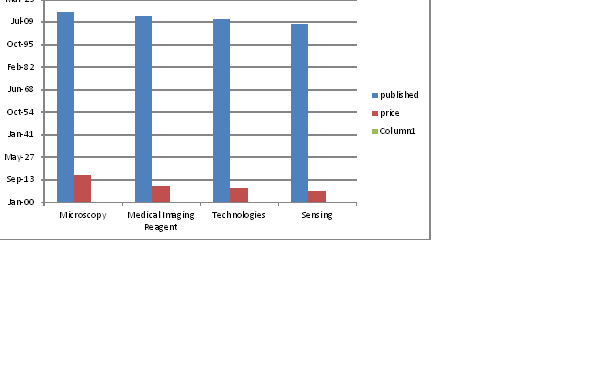
Conference Highlights
- Mycology Diversity
- Systematics
- Phylogeny and Evolution
- Fungal Identification and quantification
- Fungi and Ecosystem Functioning
- Ecology and mycology
- Mycotoxicology
- Fungal Biotechnology
- Industrial Mycology
- Medical mycology
- Veterinary Mycology
- Food Mycology
- Entrepreneur Investments Meet
- Bacterial-Fungal Interactions
- Mycobacterium
- Mushrooms
- Clinical Mycology
- Lichens
- Fungal Pathogens
To share your views and research, please click here to register for the Conference.
To Collaborate Scientific Professionals around the World
| Conference Date | September 12-14, 2016 | ||
| Sponsors & Exhibitors |
|
||
| Speaker Opportunity Closed | Day 1 | Day 2 | Day 3 |
| Poster Opportunity Closed | Click Here to View | ||
Useful Links
Special Issues
All accepted abstracts will be published in respective Our International Journals.
Abstracts will be provided with Digital Object Identifier by




